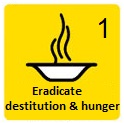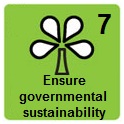Introduction:
The World Breastfeeding Week is celebrated every year over the period from 1-7 August in more than 170 countries to encourage breastfeeding and improve the health of the infants throughout the world. Breastfeeding is the best way to provide the newborns with the nutrients they need. The World Health Organization (WHO) recommends breastfeeding as the only way of feeding until the infant is 6 months old, and then continuing breastfeeding along with other complementary foods for up to two years.
Objectives of the World Breastfeeding Week:
Providing information about the millennium development goals and how the breastfeeding is linked with the nutrition of the infants and young babies.
Shedding light on the progress made so far in the breastfeeding, infants and young babies.
Drawing attention to the importance of intensifying the procedures aiming at protecting, promoting and supporting the breastfeeding as a key intervention in the millennium development goals up to the year 2015.
Stimulating interest among people of both genders to realize how important breastfeeding is in today's changing world.
The Millennium Development Goals and Their Relation with Breastfeeding

|
The exclusive and continuous breastfeeding for two years provides high quality energy and nutrition for the baby and also help to prevent hunger and malnutrition, because it is the effective way to feed infants and babies, given that it is affordable to everyone and doesn't burden families' budget compared to the burden of other substitutes. |
|---|

|
Breastfeeding and adequate complementary feeding are the most important factors for boosting learning as they significantly reduce the risk of stunting and then enhance mental development and promote learning.
|
|---|

|
Breastfeeding is considered one of the ways to draw closer attention to the woman and maintain her health by providing her with the healthy foods, in order to achieve the following:
- Pregnancy spacing.
- Promotion of the woman's ability to feed her baby.
- Concentration on ever-increasing need for feeding the woman.
|
|---|

|
Breastfeeding could reduce child mortality by about 13%, and about 6% with complementary feeding. In addition to that, and as per the WHO statistics, about 50-60% of under-5 mortality is caused by malnutrition. |
|---|

|
Breastfeeding protects women against a number of diseases such as postpartum bleeding and breast cancer, ovarian cancer and endometrial cancer, as well as increasing birth intervals and helping the mother regain her pre-pregnancy body weight.
|
|---|

|
The mother infected with HIV must take antiviral to reduce the likelihood of transmitting the virus to her child via breastfeeding.
|
|---|

|
Breastfeeding reduces waste like plastic, aluminum and rubber resulting from use of milk packets, bottles, etc. |
|---|

|
The global strategy for infant feeding aims at consolidating cooperation between the several sectors for supporting and spreading the importance of breastfeeding and how to use the existing companies to support development through breastfeeding and complementary feeding. |
|---|
Approved date, internationally: August 1st-7th, 2014
Approved date, locally: Shawal 5th-11th, 1435H
Theme of the World Breastfeeding Week 2014:
(Breastfeeding: A Winning Goal for Life)
Targeted group:
- Pregnant women
- New mothers
- Premature babies
- Maternity and children hospitals
- Those working in the medical field including doctors, nurses, pharmacists and health educators.
- Those working in the education field including teachers, social workers and others.
- Health decision makers.
- Medical organizations and bodies.
- The public.
Related Links: